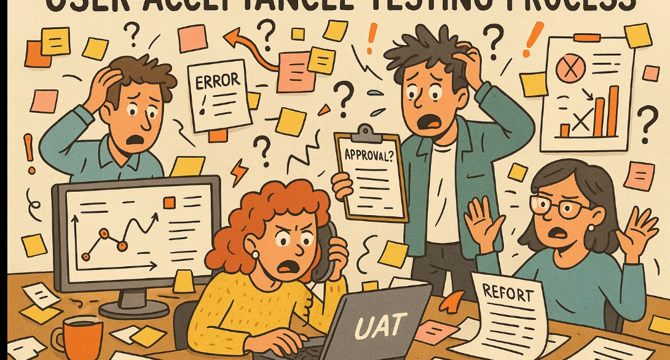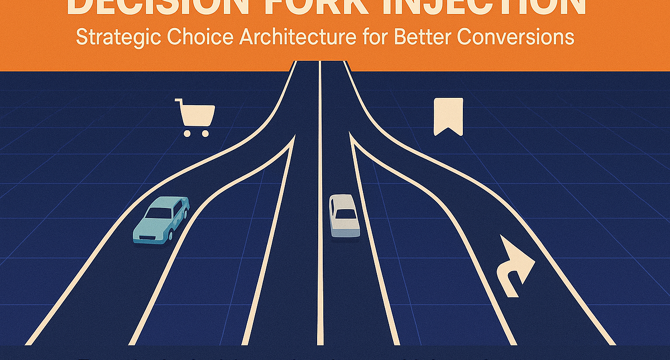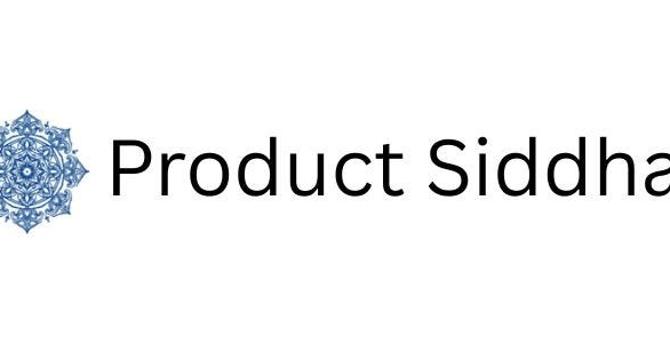Product Management News
Medium
210

Image Credit: Medium
What is User Acceptance Testing (UAT)? A Beginner’s Guide
- User Acceptance Testing (UAT) is a crucial step in software development.
- UAT validates the product with end-users to ensure it meets business needs.
- Different types of software testing include Functional Testing, Unit Testing, Integration Testing, System Testing, and more.
- UAT helps prevent costly post-launch issues by ensuring software meets user expectations.
- Proper UAT can enhance user satisfaction, adoption rates, and regulatory compliance.
- Perform UAT after system and integration tests but before deploying to production.
- Common steps in UAT involve test case creation, execution, documenting, reviewing issues, and final approval.
- Choose between traditional tools and automated UAT platforms to streamline testing processes.
- Effective UAT ensures software quality and boosts compliance.
- A notable example of the consequences of inadequate UAT was seen with Western Union's compliance bug in the mid-2010s.
- UAT can contribute to avoiding operational shutdowns, revenue loss, and user dissatisfaction.
- Incorporating post-production environments in testing helps eliminate differences between staging and production.
- UAT is integral for ensuring software meets user expectations and operational needs.
- Pitfalls in UAT can be overcome by utilizing modern automated tools.
- UAT is essential for enhancing user satisfaction and ensuring software compliance.
- Consider signing up for a free UAT session with Quellit.ai for seamless testing experiences.
Read Full Article
12 Likes
Medium
58

Image Credit: Medium
From Interest to Interface: My Product Design Journey with OgunTechies
- The author shares their positive experience with OgunTechies' Product Design Bootcamp, highlighting it as one of the best decisions made this year.
- The bootcamp focused on teaching the mindset of a product designer and problem-solving techniques rather than just tools.
- Learning Figma during the bootcamp was described as unlocking a superpower, transitioning from initial struggles to confidently building interactive prototypes.
- Despite challenges like power outages and network issues, the author persisted and progressed in their learning journey.
- A notable project during the bootcamp was Daidam Farm, a platform connecting farmers with customers and vendors, which provided a sense of contributing to impactful solutions.
- The author's involvement in user flow mapping, onboarding screens creation, and prototype development in Figma led to continuous improvement through feedback and iterations.
- After three months, the author feels equipped with skills, a supportive community, resilience, and a clearer vision of their design career path.
- The bootcamp not only provided skills but also fostered a sense of community and personal growth for the author.
- Gratitude is expressed towards OgunTechies for offering a platform for learning, growth, and future-building opportunities, with a shoutout to the friend who recommended the bootcamp.
- The author looks forward to the future with excitement, expressing pride in their progress and eagerness for what lies ahead in their design journey.
- The author mentions the beginning of a journey for Nigerian creatives with a positive outlook and determination to succeed.
Read Full Article
3 Likes
Medium
107

Image Credit: Medium
How Licensing Taught Me to Prototype for the Pitch
- The individual had a patentable idea for Keepsafe Critters but realized it needed more than just a single lion lock to be successful.
- The focus shifted towards creating a licensing platform suitable for established intellectual property and retail needs.
- The concept was expanded to include a variety of characters and be adaptable to different IP and retail requirements.
- The prototyped versions aimed to cater to kids' desire for identity, familiarity, humor, and aspirational design, while meeting toy companies' needs for extendable ecosystems.
- The key was to think in the brand's world, considering their tone, functionality, user base, and values.
- Keepsafe Critters were envisioned to adapt to various brand worlds while maintaining core functionalities like feedback-based interaction and emotional engagement.
- Success in licensing required demonstrating brand alignment and reducing the burden of imagination for executives.
- The process highlighted the importance of product storytelling and licensing strategy working together.
- Building a case for why the product belonged in a specific brand's world was crucial.
- The experience taught the importance of aligning product design with brand strategies in licensing pitches.
- Understanding the nuances of product storytelling and licensing strategy was a valuable lesson for the individual.
Read Full Article
6 Likes
Medium
412

Image Credit: Medium
How To Build Your First AI Agent?
- An AI agent is more advanced than a simple chatbot, capable of handling specific tasks.
- Consider building a customer service agent, lead qualification assistant, or content moderator for social media.
- Select a platform like Google Cloud’s Vertex AI Agent Builder for non-technical users.
- Define clear scenarios your agent will encounter to narrow down its purpose.
- Ensure your AI agent has access to relevant data sources to enhance its functionality.
- Implement actions beyond answering questions to add value, like booking appointments or setting reminders.
- Start testing your AI agent in a controlled environment before rolling it out to a wider audience.
- Provide a clear path to human support in case the AI agent cannot handle a query.
- Regularly update and improve your AI agent for optimal performance and ongoing benefits.
- Your first AI agent does not have to be perfect but should address a real need.
- Initiating the building process is key to leveraging AI technology effectively.
Read Full Article
24 Likes
Discover more
- Programming News
- Software News
- Web Design
- Devops News
- Open Source News
- Databases
- Cloud News
- Operating Systems News
- Agile Methodology News
- Computer Engineering
- Startup News
- Cryptocurrency News
- Technology News
- Blockchain News
- Data Science News
- AR News
- Apple News
- Cyber Security News
- Leadership News
- Gaming News
- Automobiles News
Medium
40

Image Credit: Medium
How Jam Jars Explain Apple’s Success
- Having too many choices can lead to decision-making difficulties due to choice overload, a phenomenon known as the Paradox of Choice.
- Research has shown that an abundance of options often results in decreased satisfaction and can lead to decision paralysis.
- Apple's success story post-1997, under Steve Jobs' leadership, highlighted the benefits of simplifying product offerings to enhance consumer decision-making.
- Studies like Benjamin Scheibehenne's meta-analysis have questioned whether choice overload or information overload is the primary issue affecting decision-making.
- The concept of offering fewer, well-presented options, as opposed to overwhelming customers with choices, has been linked to increased customer satisfaction.
- The importance of providing curated choices and confident defaults to aid customers in making decisions has been emphasized by various studies.
- Businesses can apply the Jam Jar strategy, curating a limited number of strong options and providing clear labels to simplify decision-making for consumers.
- Common mistakes like offering too many SKU options, relying solely on user filters, and not providing default choices can hinder effective decision-making.
- Clear framing and structure in the decision-making process play a crucial role in ensuring a seamless experience for both consumers and businesses.
- The Paradox of Choice remains a relevant model for businesses aiming to drive sales and enhance customer satisfaction through optimized decision-making processes.
Read Full Article
2 Likes
Medium
241

Image Credit: Medium
Why Product Thinking Makes Vibe Coding 10x Smarter (and Less Chaotic)
- Product thinking paired with vibe coding can enhance speed and efficiency.
- Product habits can help make vibe coding feel organized and purposeful.
- Thinking in user value before UI helps prioritize clarity and emotional outcomes.
- Focusing on emotional goals over specific actions leads to better UI decisions.
- Scoping tasks based on energy cost, not just difficulty, can prevent burnout.
- Scheduling and approaching tasks with clear goals can improve efficiency.
- Product thinking combined with the right tools and emotional clarity can lead to successful outcomes.
Read Full Article
12 Likes
Medium
9

Image Credit: Medium
A Product Thinking Approach to Real Estate Due Diligence
- The article discusses applying a product thinking approach to real estate due diligence, focusing on interpreting seller disclosures and inspection documents.
- It emphasizes the need to identify inconsistencies and hidden risks in real estate documents, noting the challenges faced by buyers under time pressure.
- The author shares their personal experience of discovering issues post-closing that could have been caught with better document analysis.
- They propose building a tool to flag potential document discrepancies, providing a second set of eyes for buyers.
- The article highlights the importance of understanding the problem space and feasibility before market viability in product development.
- Technical experiments using tools like ChatGPT and OCR revealed challenges in detecting document inconsistencies accurately.
- The author explores the market potential for the proposed tool, considering factors like data consistency, customer retention, and core value proposition.
- Ultimately, the article concludes that while the problem is real, the current market conditions and monetization model may not support the standalone product.
- The author reflects on the project as a valuable learning experience in product discovery and knowing when to pivot focus.
- The article invites connections from those working in risk assessment, document intelligence, or prop-tech fields and underscores the importance of problem-solving and user-centric design in product development.
Read Full Article
Like
Medium
4

Image Credit: Medium
PM Breakdown: PayPal — The Wallet at War
- PayPal faces challenges in offering a seamless experience in its broad but fragmented ecosystem.
- The company needs to cater to its diverse customer base to stay competitive.
- Despite its scale and trust, PayPal's experience may be outdated in a mobile-first world.
- To evolve, PayPal must transition from a trusted brand to an indispensable experience.
- Setting sharp metrics focused on user engagement and platform stickiness is crucial for PayPal's growth.
- Trade-offs are inevitable in product growth, and PayPal must carefully manage them.
- While trusted, PayPal must update its user experience, ecosystem, and face increasing competition.
- Key areas for PayPal's improvement include mobile-first design, cross-product synergy, transparent fees, and deeper user loyalty.
Read Full Article
Like
Medium
1.3k

Image Credit: Medium
The Customer-Driven Product Management Tool That’s Winning Hearts (and Roadmaps)
- Productboard has successfully built a $4.5-rated platform by prioritizing customer feedback in product decisions.
- The platform stands out in the product management tools market by addressing the challenge of capturing, analyzing, and acting on customer feedback at scale.
- Over 3,500 organizations worldwide use Productboard, showcasing the effectiveness of customer-driven product management as a competitive advantage.
- Product teams face difficulties in organizing and prioritizing feedback from various sources like support chats, forums, emails, sales conversations, and user interviews.
- Productboard's focus on systematizing and scaling customer feedback highlights its ability to turn it into a strategic advantage.
Read Full Article
14 Likes
Medium
166

Image Credit: Medium
One Year at 9H: Building Things That Actually Matter
- An individual reflects on their first year at 9H, emphasizing the shift from focusing solely on technical challenges to asking the right questions.
- They found that impactful results stemmed from solving the right problems, ensuring scalability, and creating reusable solutions.
- Embracing processes at 9H led to identifying opportunities for improvement and achieving greater outcomes.
- The individual worked on automating tasks through internal plugins, prioritizing critical needs, and integrating AI tools for enhanced productivity.
- They aim to transform internal tools into platforms that benefit the entire team, focusing on a product mindset and systems thinking.
- Future goals include expanding knowledge in product management, enhancing software quality, and exploring the intersection of AI and product delivery.
- The individual looks forward to ongoing learning and growth in areas like AI and business operations.
- They express enthusiasm for the future and seek collaboration with others driving innovation in WordPress development and product strategy.
Read Full Article
9 Likes
Medium
408

Image Credit: Medium
Decision Fork Injection: The Product Strategy You’ve Never Heard Of
- Decision fork injection revolutionizing user journey strategies by strategically complicating choices.
- Traditional conversion optimization simplifies choices assuming all users have same mindset and readiness.
- Users exist on a spectrum, requiring tailored decision points for diverse psychological states.
- Decision fork injection involves engineered choice points to guide users towards primary objectives.
- Engaging users through deliberate choice points maintains flow and efficiency in user journeys.
- Leverages Commitment and Consistency Principle and Behavior Model to influence user behavior.
- Injects moments with 2-3 alternatives to capture users at different commitment levels.
- Reduces cognitive load by breaking complex decisions into smaller, manageable choices.
- Analyzing drop-off points can identify optimal locations for decision fork injection.
- Each fork should cater to a specific psychological state to enhance user engagement.
- Success lies in understanding user choice patterns and aligning options with business goals.
- Limiting options to 2-3 alternatives prevents choice paralysis and aligns with business objectives.
- Mobile compatibility and testing across devices are essential for effective decision fork injection.
- Represents a shift from A/B testing towards sophisticated choice architecture optimization.
- Mastery of decision fork injection can lead to competitive advantages and improved user relationships.
- Implementing decision fork injection is a necessity for companies aiming to excel in digital landscapes.
Read Full Article
24 Likes
Medium
175

Image Credit: Medium
Why Fast-Scaling Startups Trust a Product Management Agency in India to Bridge Strategy and…
- Fast-scaling startups often struggle with translating strategic goals into actionable product plans, risking misaligned roadmaps and frustrated users.
- A product management agency in India helps startups align product strategy with execution, focusing on delivering value efficiently.
- India has become a hub for digital product development, hosting specialized product management firms with global perspectives.
- Product Siddha offers growth-focused frameworks to help startups scale without chaos, bridging the product management gap.
- They align product vision with market needs, define clear roadmaps, and prioritize features purposefully to drive growth.
- Product Siddha accelerates product launches with testable MVPs, managing development without unnecessary features.
- The agency acts as a product ops backbone, managing the entire development cycle for predictable velocity and continuous feedback.
- Analytics integration enables fast iteration based on real data, supporting actionable product decisions for startup success.
- AI tools and MarTech automation enhance product workflows, marketing reach, and customer engagement for scalable products.
- Product Siddha's services emphasize clarity, speed, and adaptability, essential for startup growth and success.
- Their approach combines lean product strategy, deep analytics, and AI-powered automation to facilitate faster and smarter growth.
- Startup founders and product leaders seeking seamless scaling can benefit from partnering with a product management agency like Product Siddha in India.
Read Full Article
10 Likes
Medium
417

Image Credit: Medium
How We Realigned, Reenergized, and Reimagined: A Look Into Our Tech Team Workshop
- The tech team workshop began with a review of Technology OKRs to provide clarity on development goals and effective prioritization.
- The alignment session was crucial for making solid decisions and managing customer expectations, with valuable insights shared by Ebo.
- Joel, the Product Manager, led a dynamic prioritization exercise on the Product Roadmap to identify high-priority and high-value features.
- The exercise aimed to streamline ambitious ideas into deliverable releases, focusing on quicker wins for users without compromising the vision.
- A team retrospective facilitated by Oleksandra, the Quality Engineer, fostered honest discussions on collaboration and continuous improvement.
- César, the cloud data engineer, provided insights on the data stream infrastructure powering warehousing, AI, and data curation for effective decision-making.
- Angel and the team shared ideas that are shaping future steps based on the data ecosystem clarity achieved in the workshop.
- The team conducted an architectural review to identify growth areas, align infrastructure with product goals, and plan for future-proofing.
- Chirag's input offered fresh perspectives on areas needing attention for improved systems within the digital platform.
- The workshop closed with a session on an upcoming product, demonstrating the team's quick progress and potential opportunities, although details were kept confidential for IP reasons.
- The workshop fostered a spirit of ownership, openness, and optimism, leaving the team aligned, accountable, and energized for the future.
Read Full Article
25 Likes
Medium
211

Image Credit: Medium
More Than Code: Driving a Feature from Concept to Launch
- Customers' feedback prompted the engineer at Bloom & Wild to address the lack of a search function in the app.
- Through data analysis and a Proof of Concept, the engineer demonstrated the necessity of a search feature.
- Collaboration with the Product, Design, and Data teams led to the feature being officially included in the roadmap.
- The project evolved into a team effort, driving improvements in the feature's development and architecture.
- The search project served as a testing ground for a cleaner architecture pattern, emphasizing scalability and maintainability.
- Results showed positive impacts on user conversion rate, multi-order rate, and user engagement with the search function.
- The success of the search feature sparked strategic discussions across various departments within the company.
- The initiative showcased how listening to users and implementing data-driven ideas can lead to broader business strategies.
- Future plans include iterating on the search feature to enhance user experience and business outcomes.
- The story highlights the power of user feedback, data analysis, and collaborative innovation in driving product enhancements.
Read Full Article
12 Likes
Scrum-Master-Toolbox
291

Stuart Tipples: The Ghost Product Owner vs. The Storytelling Master
- An exceptional Product Owner worked with an API team, excelling in clear availability, consistency, and storytelling to create clarity and engage the team and stakeholders.
- The Product Owner lacking availability and commitment earned the nickname 'The Ghost with the Most,' causing disruptions and delays within the customer-portal team.
- Stuart addressed the problematic Product Owner directly, highlighting the impact on the team and delivery, leading to self-reflection and admission of unhappiness in the role.
- Self-reflection is prompted on the use of storytelling by Product Owners to enhance team understanding and value communication.
- The Scrum Master Toolbox Podcast promotes the importance of coaching in the fintech industry, emphasizing the human aspect in corporate success.
- The podcast introduces a story about coaching and corporate intrigue, illustrating the significance of interpersonal dynamics in high-stakes innovation.
- Stuart Tipples is described as an Agilista, coach, Scrum Master, and Star Wars nerd passionate about aiding teams in delivering exceptional products to customers.
- Stuart blogs at www.yourebelscrum.com and can be linked with on LinkedIn.
Read Full Article
17 Likes
For uninterrupted reading, download the app